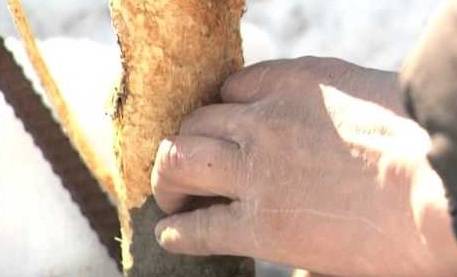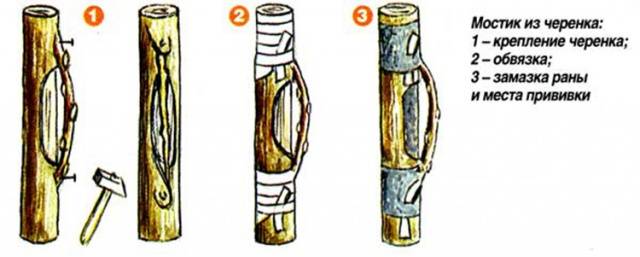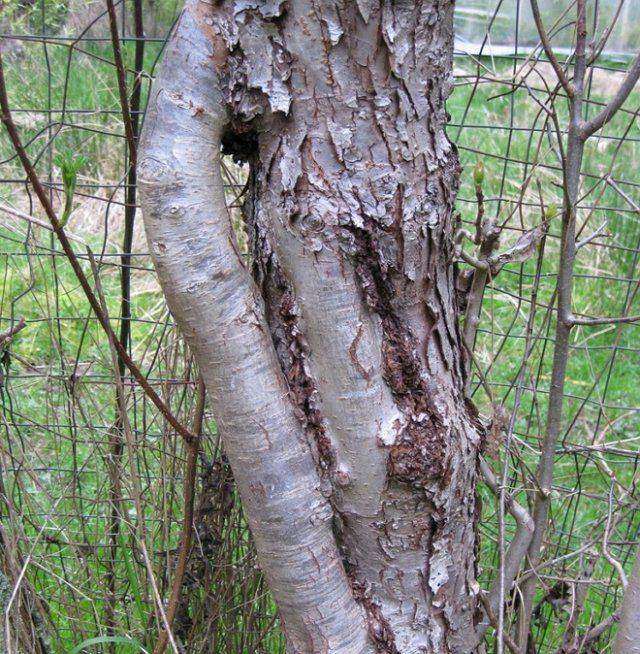Content
Many gardeners have apple trees growing on their plots. Often, for various reasons, it is necessary to treat them. One option is vaccination. Using this operation, two parts of the trunk are combined into one whole. Bridge grafting on an apple tree performed most often in the spring, while the plant has not yet woken up from wintering.
Indications for vaccination
The reasons for vaccinations may vary:
- Perform an operation on one tree so that different varieties of apples grow on it, thereby saving space in the garden.
- Increase the frost resistance of the fruit tree.
- Do not let a damaged apple tree die.
- Growing low trees using rootstocks with weak growth.
In the article we will focus on preserving damaged apple trees and the rules for grafting them with a bridge.
Preparatory work
Tools
Any vaccination is a serious procedure that requires the use of special tools and materials. In particular, when building a bridge between damaged parts of the trunk, use:
- grafting knife or pruning shears;
- materials for tying wounds;
- garden pitch, putty or regular children's plasticine.
Before work, cutting tools need to be sharpened thoroughly so that sharp cuts are obtained and there is no jamming of the bark. The knife or pruning shears must be carefully processed to prevent pathogenic bacteria from entering the wound and cuttings. Alcohol is best suited for these purposes.
About bridge grafting
Unlike other graftings, bridge grafting is not intended for producing new plant varieties. Its main task is to restore the life of the fruit tree after damage. The bark of apple trees can be damaged by rodents, scorching sun or severe frost. An area appears on the tree that prevents the normal movement of sap. This is what needs to be restored.
It is necessary to graft apple trees with a bridge when the trunk is damaged along its entire circumference.
Materials for grafting
When performing bridge grafting, you can use the following “surgical” materials:
- ordinary cuttings;
- living branches located below the damage;
- root shoots;
- pieces of bark.
Options for using scrap materials are shown in the picture below.
To make it clear, let’s decipher the notation:
- a) - damaged area;
- b) - cleaned damage area;
- c) - use of cuttings;
- d) - a bridge from its own branch;
- e) - use of root shoots;
- e) - bark as a patch.
Correct cuttings
Experienced gardeners prepare cuttings in the fall after leaf fall or early in the spring, before sap flow begins. Repair material cut in April or May rarely takes root. Good cuttings should look like in the photo.
The repair material is stored in a cool place in damp sand or sawdust. You need to make sure that the cuttings do not germinate ahead of time. Already during the preparation of the material, it is necessary to take into account the size of the cuttings: they must be long in order not only to cover the damaged area, but also to go beyond it on each side, about six centimeters.
You need to prepare cuttings of different lengths and thicknesses so that you can “darn” any damage. Before grafting, be sure to break off the buds, since they can disrupt the function of the bridge for grafting the apple tree if they begin to grow.
In case of minor damage, if the cambium is preserved, bridge grafting is not carried out. The wound is treated with Bordeaux mixture and covered with garden varnish, and the trunk is tightly wrapped in polyethylene. As a rule, in the fall you can see the restored bark under the bandage.
When to graft apple trees
Bridge grafting is suitable for many fruit trees. In this way you can “repair” apple, pear, and plum trees. Not every gardener is able to cope with the upcoming work, since the technology is quite complex and labor-intensive.
Timing of the operation
It is impossible to give an exact time frame for repairing fruit trees, since the climatic conditions of the regions vary greatly. You need to focus on the melting of snow and unhindered separation of the bark, as shown in the photo below.
Technology
If circular damage to the bark is detected, immediate measures must be taken to save the tree. To putty the damaged area, you can use garden pitch, putty, natural drying oil or oil paint. This procedure will prevent the apple tree from drying out and will give it the opportunity to hold out until the juice begins to flow.
Step-by-step instruction
- When intense sap flow begins, the injured area is cleaned of putty and wiped with a clean rag soaked in water.
- Trim the edges of the damage using a sharp, disinfected knife. The wood must not be damaged!
- The prepared cuttings are kept in the room to keep them warm. All buds are removed from them. Both ends of the scion are cut at an acute angle. The length of the oblique cuts should be at least 3-4 centimeters.
- T-shaped cuts are made on the bark above and below the damage. Carefully bend the edges and insert the cutting under the bark. Moreover, the procedure begins from the lower edge of the wound.
- The inserted cutting must be wrapped tightly, and then the other end must be inserted into the upper cut. The location of the bridges for grafting is strictly vertical and necessarily arched. This position ensures normal sap flow.
Features of fixing cuttings
When grafting cuttings with a bridge, special rules must be followed:
- When applying oblique cuts, you need to press them tightly against the wood of the apple tree so that the coincidence of the cambium is maximum. The slightest gap causes rejection.
- Fixation of the ends of the cuttings when grafting with a bridge should be rigid.You can even nail them to the trunk with small nails and then tie them tightly.
- For tying, it is best to use twine, PVC or polyethylene film, or duct tape. A medical plaster based on fabric is also suitable.
- The bridge grafting sites are well coated with garden varnish, putty, and plasticine to prevent dust from getting into them.
Caring for the graft
In summer, shoots may appear at the site of grafting of bridge cuttings. It must be removed. The crown of the apple tree is also cut off by a third to prevent the loss of moisture necessary for the healing of the bridge.
Often young apple trees have to be grafted. They are still weak and can break at the bridge site. To prevent this from happening, two stakes are driven in next to the fruit tree and the apple tree is tied to them.
Apple trees grafted with a bridge must be fed with phosphorus and potassium fertilizers and the soil in the crown area is loosened.
To understand the features of bridge grafting on an apple tree, watch the video:
What is the result of vaccination
If the operation was successful, this will become noticeable within two or three weeks. The rootstocks are thickening, which means that nutrients have begun to flow through the bridge. Shoots appear on the cuttings, which must be removed immediately. This is a signal that the harness needs to be loosened or replaced with a new one.
As a rule, cuttings grafted with a bridge completely take root within a month. At this time the garter is removed. If it is not removed, the apple tree will hurt.
No further actions need to be performed. The bridge will gradually thicken and become an excellent conductor of nutrients through the damaged area on the apple tree branch.
After a few years, the grafted bridge will become thick, as in the photo below.
Even experienced gardeners do not always succeed in grafting bridge apple trees. The operation can be repeated next season. If it was not possible to restore sap flow using cuttings, it may be possible to do this using bark. The main thing is not to despair, but to find a way to preserve apple trees in the garden.

















